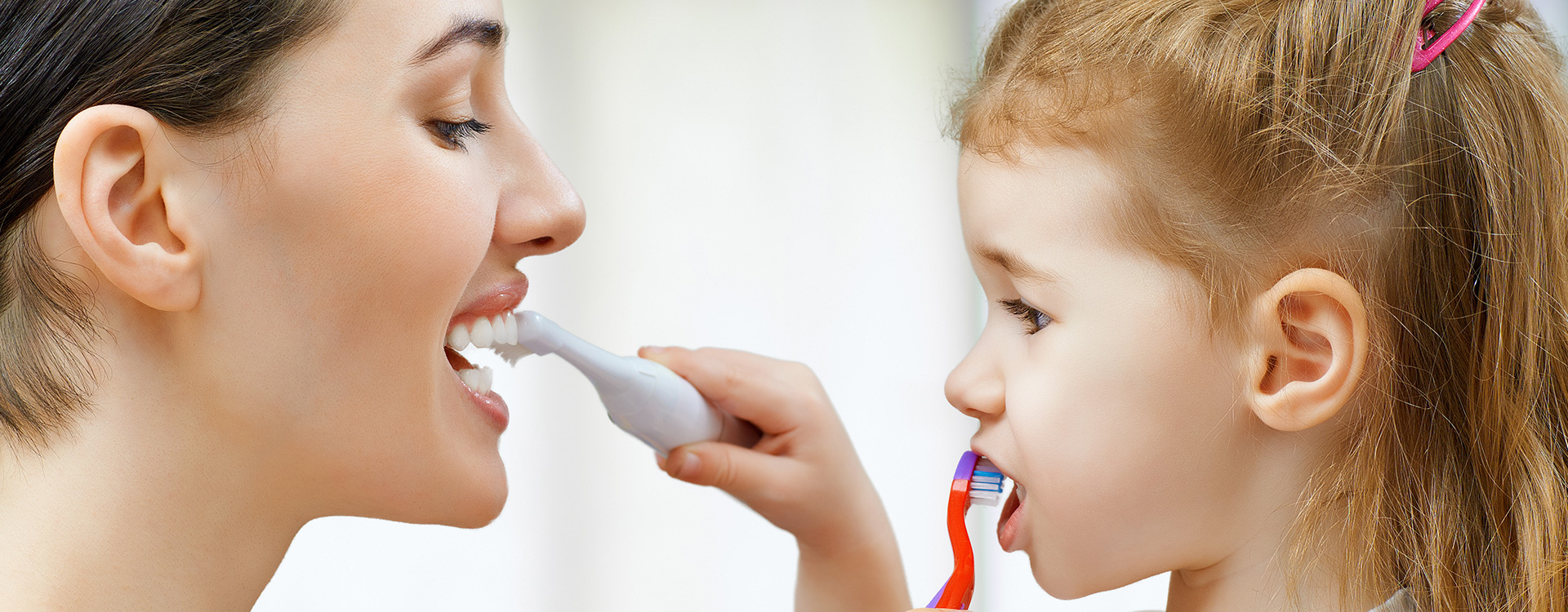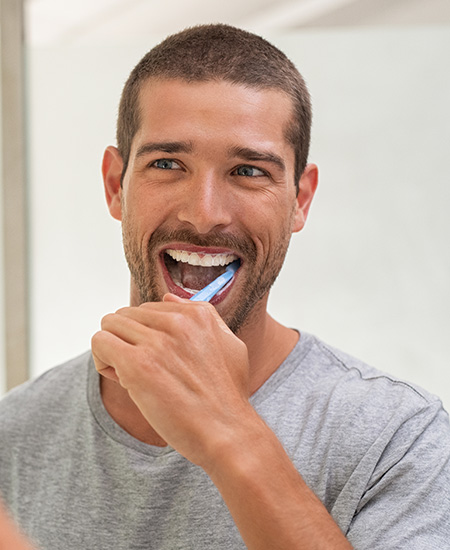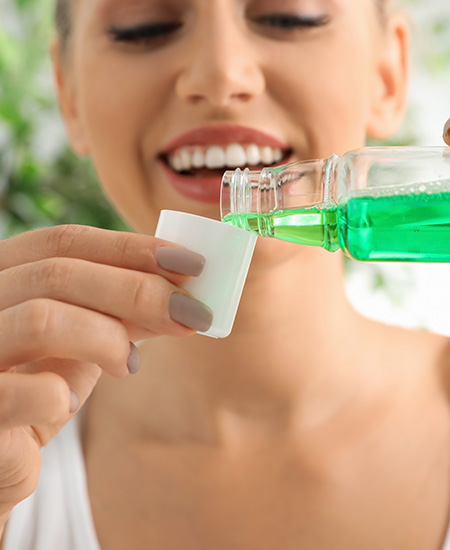
Post-Treatment Instructions
Your dentist and the dental care staff at Pike Creek Dental have explained your treatment and given you follow-up directions. However, you may have some additional questions or need reminders, so we’ve compiled this section as a review of the most common post-treatment instructions.
Have Questions? Call (302)293-0410
Post-Treatment Instructions
Post-Treatment for Oral Hygiene Care
It feels wonderful to leave the dentist with a smile that has been freshly cleaned and polished. Now, how do you keep it in its best possible condition so that you will have healthy teeth and gums for a lifetime?
Routine care is essential for preserving good oral health. That means brushing, flossing and having regular dental appointments.
Brushing Your Teeth
Brushing your teeth is essential for removing plaque and food debris on the chewing, inside and outside surfaces of the teeth. Plaque refers to the bacteria and mucus that sticks to your teeth. There is a direct connection among plaque, tooth decay and gum disease, so do not neglect brushing your teeth.
Brush your teeth twice a day, especially in the morning and at bedtime, using a soft toothbrush and a brand-name toothpaste that contains fluoride.
For the inside and outside surfaces of the teeth, hold your toothbrush at a 45-degree angle to the teeth and gums and use a gentle, back-and-forth motion. It is important that the brush contact the teeth and gums at the same time. This technique will not only clean your teeth but also will keep your gums healthy. On the chewing surfaces, hold the brush flat and use a gentle, scrubbing motion.
Brush for two minutes. Most people brush for only 20-30 seconds, which is nowhere near as effective as two minutes. Try timing yourself until you get a feel for how long two minutes really is.
When you have finished brushing, spit out as much as you can. Don’t swallow any of the toothpaste, and don’t rinse with water.


Flossing
Flossing will remove plaque and food sediment above and below the gum line and between the teeth. Like brushing, routine flossing is essential to good oral hygiene.
Floss once a day. We recommend the Glide brand of floss. It fits smoothly between teeth and is designed not to shred or get caught on your teeth or fillings.
Take an 18-inch length of floss and wrap it around your two middle fingers. Hold about 1 inch of this floss between the thumb and forefinger of each hand, tightly.
Gently place this 1-inch piece between two teeth and move it into the space between the gum and the tooth below the gum line. When you reach the gum line, hold the floss against one tooth and move it up and down along the side of the tooth, from just below where the two teeth meet to as far below the gum line as you can comfortably get. It is important to get the floss in the space between the gum and the tooth, as this is where gum disease begins.
Repeat this procedure for the tooth on the other side. Then, move from tooth to tooth following the steps outlined above. Be sure to use a fresh section of floss for each pair of teeth.
If you haven’t flossed for some time, your gums might bleed a little at first. If you are flossing correctly at least once a day, your gums will begin to heal and the bleeding should stop in a few weeks. Call us if the bleeding persists beyond two weeks.
Tongue Scraping
A tongue scraper removes bacteria and food debris from the tongue. These substances can get stuck in the crevices of the tongue and, if not removed, can cause bad breath. After brushing, tongue scraping followed by a dental rinse is the best way to control bad breath.
We will give you a scraper with two sides, regular and soft. Use the regular side unless directed otherwise.
Hold the scraper with two hands, between the thumb and forefinger. Bend the scraper so that it forms a “C.” Stick out your tongue and scrape from back to front several times. Rinse off the film that develops on the scraper. Repeat the scraping and rinsing process until the film coming off your tongue is clear.
Rinse and dry the tongue scraper. It is designed to last a long time.
Rinsing with Antibacterial Dental Rinse
Using an antibacterial rinse regularly will cut down on the bacteria that cause gum disease, bacteria and bad breath.
We recommend using a non-alcoholic, non-bacterial rinse such as BreathRx or Crest Pro Health Rinse. Most mouth rinses contain a high percentage of alcohol, which dries out your mouth. When the mouth becomes dry, it not only feels bad, it can also make your breath smell worse than before you used it!
Using a small amount of mouth rinse, swish it around in your mouth for 10-15 second and spit it out. Do not rinse with water.
Post Treatment After Composite Fillings
Composite fillings are tooth-colored fillings used to fill cavities. We also sometimes use them to fill small, natural crevices in the tooth that can be susceptible to cavity development. Composite fillings are an advance over the older, silver amalgam-type fillings for a number of reasons: They look more natural (unnoticeable to others, in fact), and they dry right away, which makes your recovery from getting a filling much easier than it once was.
Because composite fillings set hard right away, you do not have to wait before eating or drinking.
Children should be observed until after the anesthetic wears off. If you have any concerns at all, call the office immediately. Due to the unusual sensation caused by the anesthetic, some children will chew the inside or their lips, cheeks or tongue, which can cause serious damage. Call us if you suspect this has occurred.
In any person, adult or child, sensitivity to hot and cold is common for a few weeks following receipt of a filling. The deeper the cavity, the more sensitive the tooth might be. If the sensitivity continues, please call our office.
The gum tissue might also be sore for a few days along the anesthetic injection site. The discomfort will go away in time.
The finished tooth might be contoured slightly differently and have a different shape than the tooth originally had. Your tongue usually magnifies this small difference and will become adjusted to the new feeling after a few days. However, if you feel your bite is not correctly balanced, the filling shape might need to be adjusted. Please call for an appointment. There will be no extra charge.

Dr. Ryan and his team are always friendly, knowledgeable, and skillful in their work. My previous experiences had mainly been with the hygienists, who are all excellent, but I had my first cavity and the procedure for a filling was nothing short of impressive. Quick and painless!
Definitely recommend Pike Creek Dental, exceptional service through out the entire practice I would describe myself as not the biggest fan of going to the dentist and I have no problem going here.
